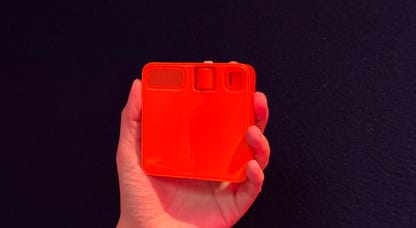Best of the
Best
Editors' picks and our top buying guides
Best of the
Best
Editors' picks and our top buying guides
Latest
The 32 Best Gift Baskets of 2024: Find the Perfect Edible Gift
17 minutes agoSnag Two Anker USB-C Fast Chargers and Cables for Just $13 With Prime
38 minutes agoBest Internet Providers in Dallas, Texas
47 minutes agoNomad Internet Review: Cellular Setup With No Strings Attached
47 minutes agoHow Much Can You Earn by Depositing $10,000 Into a CD?
47 minutes agoiPhone 16: The Features We're Expecting From Apple's Next iPhone
49 minutes agoUpgrade to This 256GB OnePlus 12R Smartphone for Just $530 Today
59 minutes agoLearn New Languages for Good With a Lifetime Babbel Subscription, Now Just $150
1 hour agoPower Up Your iPhone With 50% Off This Incredible Magnetic Battery
1 hour agoThis Awesome Amazfit GTR 4 Smartwatch Is Currently $30 Off
1 hour agoTikTok Could Be Banned Next Year: 5 Alternatives to Fill the Void
1 hour agoThis All-Natural Spray Finally Solved My Mouse Problem
1 hour agoCan Smartphones Bridge the Digital Divide? The Answer Is Complicated
1 hour agoWashington Solar Panel Incentives: Net Metering, Tax Breaks and More
1 hour agoHow to Find and Choose a Renewable Energy Supplier for Your Home
1 hour agoMore to Explore
Reviews, advice and more from CNET's experts.
Get the best price on everything CNET Shopping helps you get the best prices on your favorite products. Get promo codes and discounts with a single click.
Add to Chrome - it's free!
Our Expertise
Expertise Lindsey Turrentine is executive vice president for content and audience. She has helped shape digital media since digital media was born.
0357911176
02468104
024681024
Featured in
Tech
Upgrade your inbox
Get CNET Insider
From talking fridges to iPhones, our experts are here to help make the world a little less complicated.
Featured in
Money
Crossing the Broadband Divide
Millions of Americans lack access to high-speed internet. Here's how to fix that.
Featured in
Energy and Utilities
Deep Dives
Immerse yourself in our in-depth stories.
Get the best price on everything CNET Shopping helps you get the best prices on your favorite products. Get promo codes and discounts with a single click.
Add to Chrome - it's free!
Featured in
Internet
Sleep Through the Night
Get the best sleep of your life with our expert tips.
Get the best price on everything CNET Shopping helps you get the best prices on your favorite products. Get promo codes and discounts with a single click.
Add to Chrome - it's free!
Tech Tips
Get the most out of your phone with this expert advice.
Get the best price on everything CNET Shopping helps you get the best prices on your favorite products. Get promo codes and discounts with a single click.
Add to Chrome - it's free!
Featured in
Home
Living Off Grid
CNET's Eric Mack has lived off the grid for over three years. Here's what he learned.












